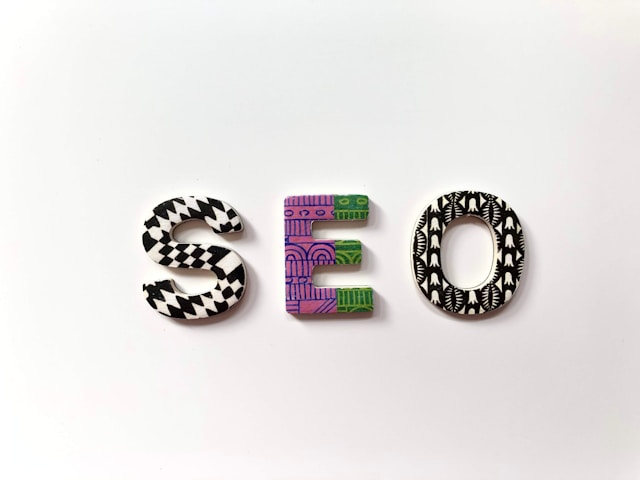If you're aiming to enhance your website's Search Engine Optimization (SEO), mastering the art of internal linking is essential. Internal links not only help search engines understand the structure of your website but also distribute page authority and enhance user experience. In this article, we'll explore the importance of internal linking, how to create a hierarchy, and the significance of page importance in your SEO strategy.
Table of Contents
Understanding Internal Linking
What Are Internal Links?
Internal links are hyperlinks that point from one page to another within the same domain. They are crucial for guiding users through your website and helping search engines crawl and index your content more efficiently.
Benefits of Internal Linking
Internal linking offers several SEO benefits, including:
- Improved Crawling and Indexing: Search engines use internal links to discover new content and understand the structure of your website.
- Enhanced User Experience: Well-placed internal links help users navigate your site, find relevant content, and stay engaged.
- Distribution of Page Authority: Internal links distribute the authority of your website across different pages, improving their chances of ranking higher in search engine results.
Creating an Effective Internal Linking Strategy

Building a Hierarchical Structure
A well-structured website hierarchy is the foundation of an effective internal linking strategy. This involves organizing your content in a logical manner, typically with the most important pages at the top and supporting content branching out from them.
Home Page and Main Categories
The home page is usually the most authoritative page on your website. From the home page, link to your main categories or key pages that represent the primary topics or services of your site.
For example, if you run a technology blog, your main categories might be "Software," "Hardware," "Reviews," and "Tutorials." These categories should be prominently linked from the home page.
Subcategories and Detailed Pages
Under each main category, create subcategories and detailed pages. These should be linked from their respective parent category pages. This hierarchical structure helps search engines understand the importance and relevance of each page.
For instance, under the "Software" category, you might have subcategories like "Operating Systems," "Productivity Tools," and "Development Software." Each subcategory should link to relevant detailed pages or blog posts.
Using Anchor Text Effectively
Anchor text is the visible, clickable text in a hyperlink. Using descriptive and relevant anchor text helps search engines understand the context of the linked page. Avoid generic phrases like "click here" and instead use specific keywords related to the content.
Example:
|
1 |
<a href="https://yourwebsite.com/operating-systems">Learn more about the latest operating systems</a> |
In this example, "Learn more about the latest operating systems" is the anchor text, which provides context to both users and search engines.
Page Importance and Authority
Determining Page Importance
Not all pages on your website are of equal importance. To optimize your internal linking strategy, identify the most important pages based on their content, relevance, and the role they play in your business goals.
Distributing Page Authority
Page authority is a metric that indicates the potential of a page to rank in search engine results. By strategically placing internal links, you can distribute authority from high-authority pages (like your home page or popular articles) to other important but less authoritative pages.
Example of Authority Distribution
Assume you have a high-authority blog post about "The Future of AI." You can use this page to boost the authority of related but newer or less authoritative pages by linking to them within the content.
|
1 |
<p>As discussed in <a href="https://yourwebsite.com/ai-basics">our introduction to AI</a>, the development of artificial intelligence is progressing rapidly...</p> |
This internal link helps distribute authority to the "AI Basics" page, potentially improving its search engine ranking.
Best Practices for Internal Linking
Maintain a Natural Flow
Internal links should enhance the readability and usability of your content. Avoid overstuffing your content with links. Instead, ensure that links are relevant and provide value to the reader.
Use a Balanced Number of Links
While internal linking is beneficial, too many links on a single page can dilute their effectiveness. Aim for a balanced number of internal links, ensuring that each link is meaningful and contextually relevant.
Regularly Update and Audit Links
Regularly review and update your internal links to ensure they remain relevant and functional. Broken links can negatively impact user experience and SEO.
Practical Examples of Internal Linking
Blog Post Linking
Blog posts are excellent opportunities for internal linking. Within each post, link to related articles, categories, or cornerstone content. This not only helps with SEO but also keeps readers engaged by guiding them to additional valuable content.
Example of an internal link within a blog post:
|
1 |
<p>For a deeper understanding of machine learning algorithms, check out our comprehensive guide on <a href="https://yourwebsite.com/machine-learning-algorithms">Machine Learning Algorithms</a>.</p> |
Linking from Product Pages
If you run an e-commerce site, link related products, categories, and blog posts that provide additional information or reviews. This helps users find relevant products and content, enhancing their shopping experience.
Example:
|
1 |
<p>Customers who viewed this laptop also considered our <a href="https://yourwebsite.com/gaming-laptops">Gaming Laptops</a> section, featuring top-rated models.</p> |
Enhancing SEO through Internal Linking

Improving Crawlability
Internal links help search engines crawl your website more efficiently. By ensuring that all important pages are linked and accessible, you improve the chances of these pages being indexed and ranked.
Enhancing User Engagement
Well-placed internal links keep users on your site longer by guiding them to related content. This reduces bounce rates and increases the time spent on your site, both of which are positive signals for SEO.
Highlighting Key Pages
Use internal links to highlight and prioritize key pages that are important for your SEO strategy. This could include cornerstone content, high-converting product pages, or important informational pages.
Example of a Comprehensive Internal Linking Strategy
Let's consider an example of a technology blog that covers various topics like software, hardware, reviews, and tutorials.
- Home Page: The home page links to main categories such as "Software," "Hardware," "Reviews," and "Tutorials."
- Category Pages: Each category page, like "Software," links to subcategories and relevant posts, such as "Operating Systems," "Productivity Tools," and "Development Software."
- Subcategory Pages: Under "Operating Systems," link to detailed posts about specific systems, updates, and tutorials.
- Detailed Posts: Within a post about "The Latest Windows Update," include internal links to related posts, such as "Windows Tips and Tricks" or "How to Optimize Windows Performance."
This hierarchical structure ensures that both users and search engines can navigate and understand the importance of different pages on your site.
Conclusion
Effective internal linking is a cornerstone of a successful SEO strategy. By understanding the importance of a hierarchical structure, using descriptive anchor text, and strategically distributing page authority, you can improve your website’s search engine ranking and user experience. Regularly review and update your internal links to maintain their relevance and functionality, ensuring your site continues to perform well in search results. Boost your SEO and page ranking.

